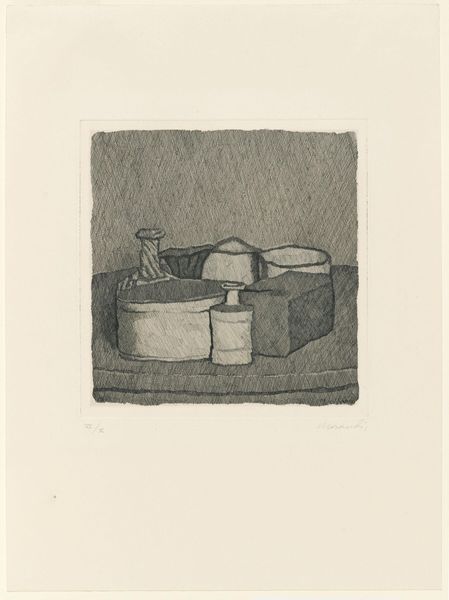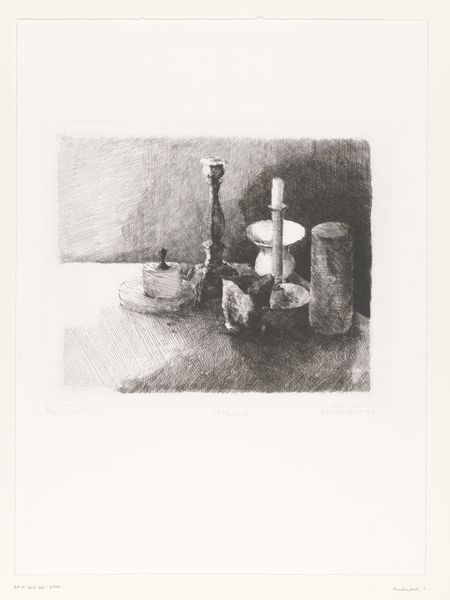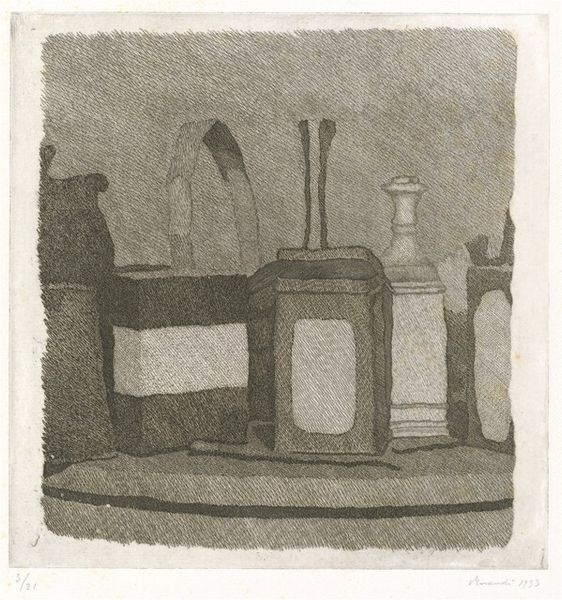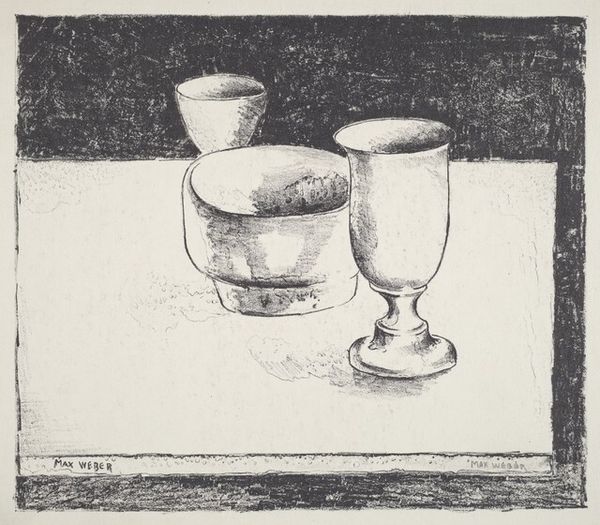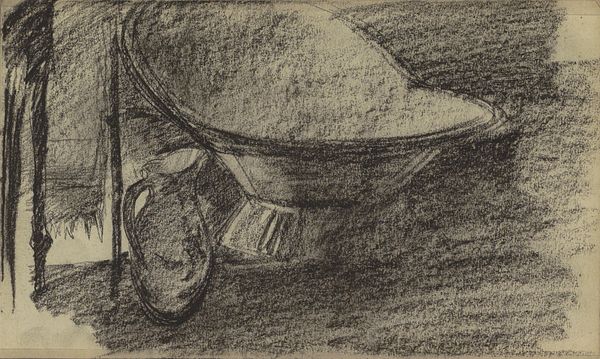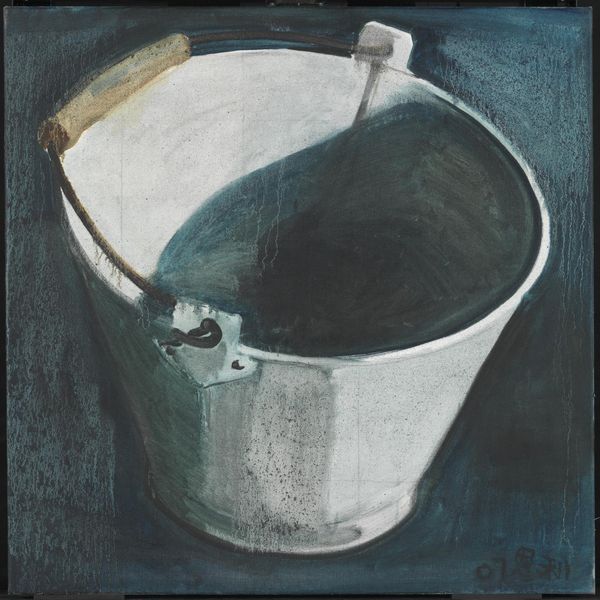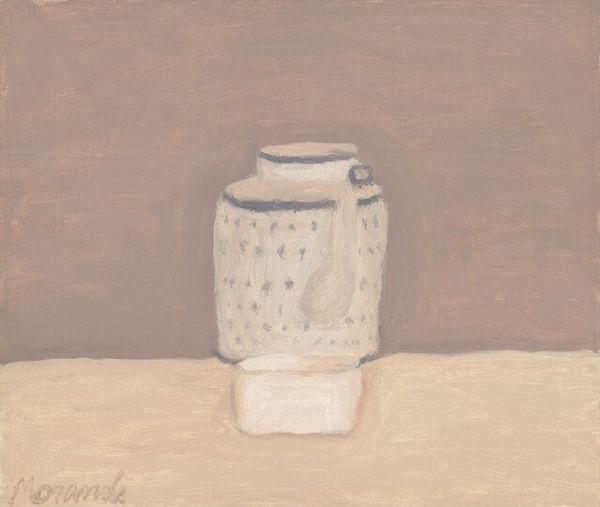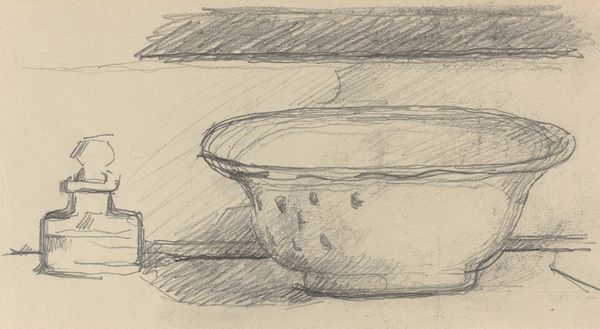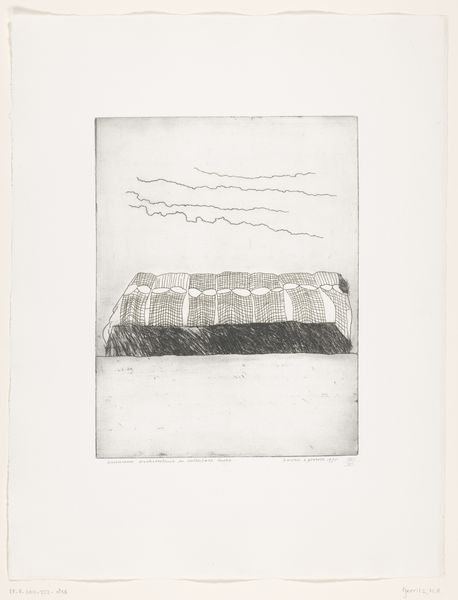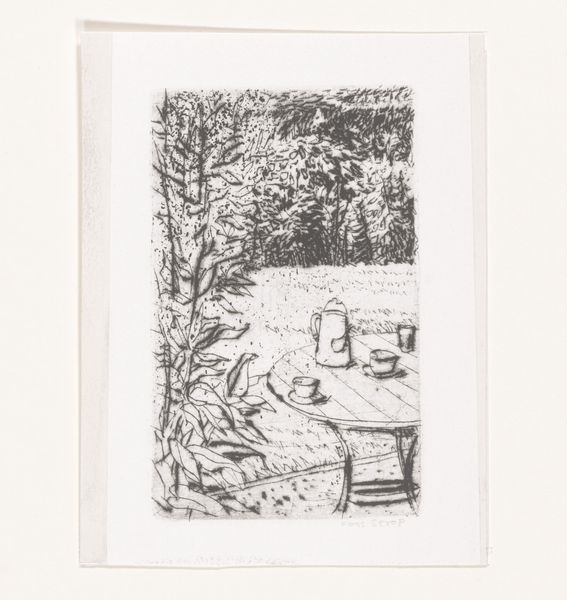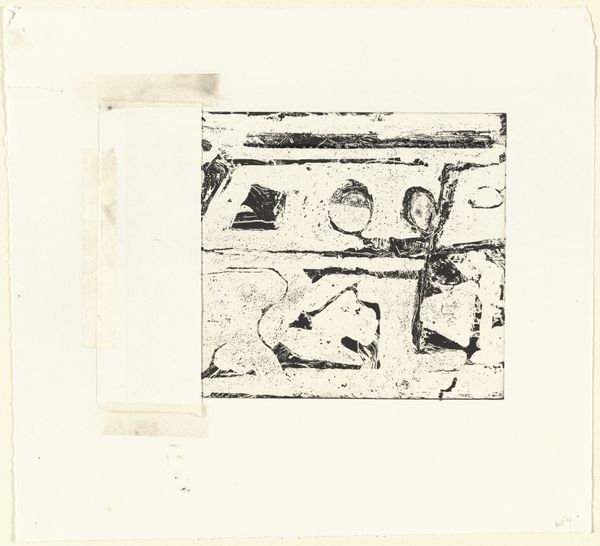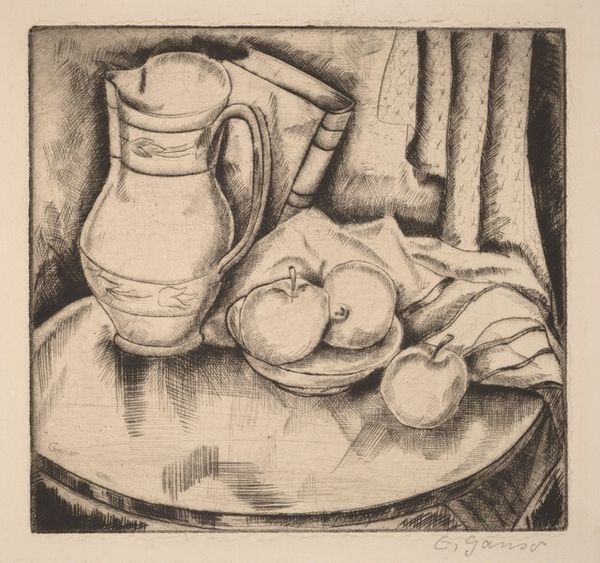
print, etching
# print
#
etching
#
geometric
#
modernism
Dimensions: plate: 20.2 x 19.8 cm (7 15/16 x 7 13/16 in.) sheet: 40.1 x 29.1 cm (15 13/16 x 11 7/16 in.)
Copyright: National Gallery of Art: CC0 1.0
Editor: We're looking at Giorgio Morandi's "Still Life with Four Objects and Three Bottles," an etching from 1956. The composition is quiet, almost austere, focusing on simple, geometric forms. What stands out to you? Curator: Immediately, the materiality grabs my attention. It's an etching, a process demanding specific tools and labor. The lines, cross-hatching – these aren't spontaneous gestures. They speak to a deliberate, almost industrial act of image-making. Do you think about what kind of acid bath he would use? Editor: Industrial, yes, but it still feels handcrafted. How do you reconcile those two? Curator: Precisely! It’s the tension that fascinates me. He's using a mechanical reproductive method, but the subject is decidedly mundane: bottles, containers – mass-produced items themselves. The "high" art of etching meets the "low" art of everyday objects, forcing us to question these distinctions. We must ask ourselves about the political choices about materials here. Editor: That's interesting – I hadn't thought of it that way. So you see the meaning as tied to the materials and the production? Curator: Absolutely. Morandi's choice of etching transforms these ordinary objects. By carefully rendering them through this process, he elevates and re-contextualizes their place within a capitalist society, subtly challenging traditional art hierarchies and what we define as precious. Editor: I never would have gotten to that level of analysis! Thanks, I learned a lot about thinking of how materials and labor change the value and impact of art. Curator: Likewise, considering the intersection of handcraft and industrial techniques opens so many interpretive avenues for works like these.
Comments
No comments
Be the first to comment and join the conversation on the ultimate creative platform.
